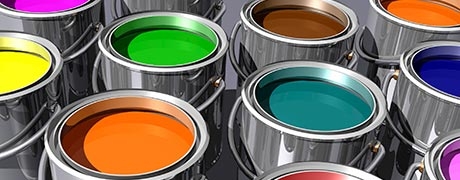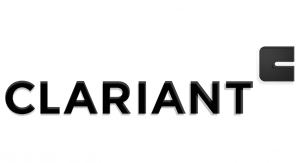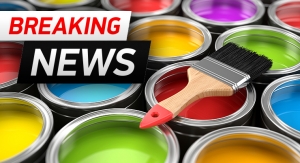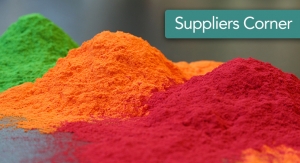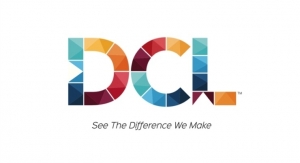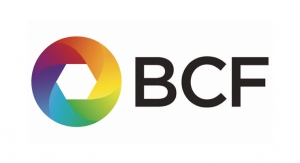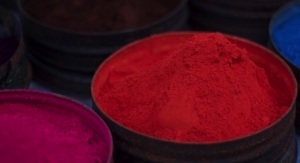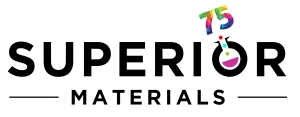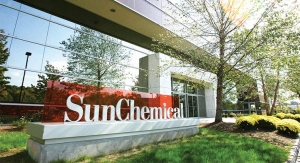Kerry Pianoforte, Editor 01.05.18
According to Grand View Research, the inorganic pigments markets is recovering gradually after the decline during the economic downturn during 2008 - 2009.
Asia Pacific accounts for more than 50 percent of the global consumption of inorganic pigments. Rapid industrialization and growing infrastructure development are expected to be factors contributing to the growth, particularly in China, India and Indonesia. North America is expected to witness steady growth owing to large exports particularly to China, Germany, Japan, and Belgium. Europe is expected to witness a sluggish growth owing to a decline in infrastructure activities. Middle East & Africa is expected to grow significantly owing to large construction projects particularly in Qatar, Nigeria and Saudi Arabia.
“We feel that each region still has growth opportunities,” said Rose Qin, global business management, Pigments for Coatings at BASF. “In 2017, we achieved nice growth in the European market. Long-term, we believe the biggest growth opportunities are in the emerging markets in Asia. With our globally connected organization, we are well positioned to support growth together with all customers around the world.”
Brandon Devis, director of sales and marketing, Coatings North America at Clariant said, while consumption of pigments in automotive and industrial has remained in line with GDP, in decorative coatings, the company expects an above-average pigments volume growth in emerging regions like China and India with currently still low consumption of paints in relation to the number of occupants, and respectively in comparison to traditional markets in Europe and North America. “Replacement of lead chromates has an additional positive effect on organic pigments volume growth in the emerging regions,” he added. “In Europe and North America, we see a consistent value of the pigment market is the result of decreasing price developments besides overall volume increase.”
“We see the greatest potential for growth to be in the APAC and North America regions,” said Dr. Hans-Peter Baldus, vice president – head of IPG Americas, Inorganic Pigments Group, Lanxess. “LATAM will recover from the latest economic downturn in the coming years but growth will be moderate. We also expect more moderate growth in EMEA to a certain extent.”
According to Oliver Pfefferkorn, sales director at Union Colours, REACH in Europe already has shown an impact on growth and it also helps their business with multinational companies outside of Europe.
“We see an increasing demand outside of Europe for lead-free alternatives and we are offering solutions on multiple levels,” said Pfefferkorn. “Traditional pigment producers keep consolidating their ranges which opens opportunities to us. Challenges derive from the difficult supply situation of raw materials specifically in China due to the Chinese Environmental Protection Agency looking much closer at who is compliant with newly enforced laws on effluents. The coatings market’s demand for clean pigments is growing as it did many years ago already in the ink industry.”
Union Colours has invested in new production volumes and effluent treatment to ensure they will not face temporary closures as happened to many other producers in China. “We are also building a new production plant in South Africa to make clean pigments to comply with today’s and future regulatory driven needs in our customer base.”
Sun Chemical noted that opportunities for growth are available in all markets including the mature markets of Europe and the United States. “Pockets of regional growth opportunities can be found in areas driven by unique local market requirements. Products such as our new Sunbrite Yellow 74, for example, have seen strong growth by fulfilling the needs of architectural decorative coatings,” said Michael T. Venturini, marketing director, Coatings, Sun Chemical.
To stay competitive on a global playing field, Sun Chemical uses a tailor-made approach to provide products and services focused on helping the customer deliver unique performance that helps them succeed.
“The market is seeing advances in environmental improvements, new chromophores, increased color strength, and higher chroma,” said Venturini. “Sun Chemical is innovating in all these areas.”
One of the most significant innovations has been the dramatic increase in transparency of new offerings. “As one of Sun Chemical’s primary core abilities, we are at the front of the transparency trend in offering new products that include Perrindo Red 179, Palomar Blue 60 and Quindo Red 122 chemistries,” said Venturini. “The high transparency innovations started a color trend in the automotive sector with high chroma metallic finishes, and it is now influencing color trends for everything from nail lacquers to home appliances. “Sun Chemical also developed its Sunbrite Yellow 74 to deliver superior dispersibility and added tint strength for architectural decorative coatings.”
“Innovation is part of our core philosophy at Sun Chemical and we’ll continue to invest in research in end markets and applications where it is justified,” added Venturini. “We heavily invest in research and development and use our significant investment to support specific customers’ needs for eco-friendly coatings technologies. Not only that, but we also drive trends and technologies with new innovations in high-performance pigments, effects and functional pigments.”
BASF provides pigments to a variety of industries. “In the automotive coatings industry, our customers expect us to drive the innovation of unique coloristic effects in the market, leading to more brilliant colors due to higher chroma and more intense light effects, said Qin. “Furthermore, we constantly work on innovative pigments, which can significantly enhance the value in use for the coatings manufacturer, for example by excellent hiding properties and major advantages in the dispersion process.”
According to Qin, innovation in the pigment industry is driven by three major trends: unique styling options enhanced efficiency-in-use and sustainable solutions.
“We strive to offer unique styling options by developing new pigments that unlock novel coloristic potential,” said Qin. “When looking at enhanced efficiency-in-use for the paint producer, there are several solutions. This can be achieved through new technologies or individual pigment preparations that improve the handling of our pigments throughout the paint production process and furthermore through the value chain. We continue to provide sustainable pigments solutions, like our products based on natural mica. Ideally, of course, all elements are represented when we bring a new product to the market.”
“As in previous years we see the biggest opportunities for growth in Asia,” said Robert Poemer, business unit leader at Heucotech, Ltd. “However in 2017 we have seen significant growth in some European countries and this trend is supposed to continue also next year. Once Latin America will have left behind the current economic weak period, we see lots of opportunities for growth there in the future. There is an ongoing trend to high performance and sustainable pigment solutions from the mature markets but even in some areas in Asia, the Middle East and Africa a tendency for high-performance solutions is seen. NAFTA growth in coatings has been mostly flat.”
“For our product portfolio of anticorrosive pigments we provide a full range of zinc-free solutions,” said Poemer. ”Major efforts have been taken to increase production volumes of our anticorrosive, inorganic and organic pigments in 2017 at all three of our major Heubach sites. Heubach Germany has significantly increased production volumes of inorganic pigments. Heubach India has increased its production volumes for Phthalocyanine crude, PG 7 as well as PR 122. Heucotech U.S. is building a new plant for anticorrosive pigments.”
“We feel that each region still has growth opportunities,” said Rose Qin, global business management, Pigments for Coatings at BASF. “In 2017, we achieved nice growth in the European market. Long-term, we believe the biggest growth opportunities are in the emerging markets in Asia. With our globally connected organization, we are well positioned to support growth together with all customers around the world.”
Brandon Devis, director of sales and marketing, Coatings North America at Clariant said, while consumption of pigments in automotive and industrial has remained in line with GDP, in decorative coatings, the company expects an above-average pigments volume growth in emerging regions like China and India with currently still low consumption of paints in relation to the number of occupants, and respectively in comparison to traditional markets in Europe and North America. “Replacement of lead chromates has an additional positive effect on organic pigments volume growth in the emerging regions,” he added. “In Europe and North America, we see a consistent value of the pigment market is the result of decreasing price developments besides overall volume increase.”
“We see the greatest potential for growth to be in the APAC and North America regions,” said Dr. Hans-Peter Baldus, vice president – head of IPG Americas, Inorganic Pigments Group, Lanxess. “LATAM will recover from the latest economic downturn in the coming years but growth will be moderate. We also expect more moderate growth in EMEA to a certain extent.”
According to Oliver Pfefferkorn, sales director at Union Colours, REACH in Europe already has shown an impact on growth and it also helps their business with multinational companies outside of Europe.
“We see an increasing demand outside of Europe for lead-free alternatives and we are offering solutions on multiple levels,” said Pfefferkorn. “Traditional pigment producers keep consolidating their ranges which opens opportunities to us. Challenges derive from the difficult supply situation of raw materials specifically in China due to the Chinese Environmental Protection Agency looking much closer at who is compliant with newly enforced laws on effluents. The coatings market’s demand for clean pigments is growing as it did many years ago already in the ink industry.”
Union Colours has invested in new production volumes and effluent treatment to ensure they will not face temporary closures as happened to many other producers in China. “We are also building a new production plant in South Africa to make clean pigments to comply with today’s and future regulatory driven needs in our customer base.”
Sun Chemical noted that opportunities for growth are available in all markets including the mature markets of Europe and the United States. “Pockets of regional growth opportunities can be found in areas driven by unique local market requirements. Products such as our new Sunbrite Yellow 74, for example, have seen strong growth by fulfilling the needs of architectural decorative coatings,” said Michael T. Venturini, marketing director, Coatings, Sun Chemical.
To stay competitive on a global playing field, Sun Chemical uses a tailor-made approach to provide products and services focused on helping the customer deliver unique performance that helps them succeed.
“The market is seeing advances in environmental improvements, new chromophores, increased color strength, and higher chroma,” said Venturini. “Sun Chemical is innovating in all these areas.”
One of the most significant innovations has been the dramatic increase in transparency of new offerings. “As one of Sun Chemical’s primary core abilities, we are at the front of the transparency trend in offering new products that include Perrindo Red 179, Palomar Blue 60 and Quindo Red 122 chemistries,” said Venturini. “The high transparency innovations started a color trend in the automotive sector with high chroma metallic finishes, and it is now influencing color trends for everything from nail lacquers to home appliances. “Sun Chemical also developed its Sunbrite Yellow 74 to deliver superior dispersibility and added tint strength for architectural decorative coatings.”
“Innovation is part of our core philosophy at Sun Chemical and we’ll continue to invest in research in end markets and applications where it is justified,” added Venturini. “We heavily invest in research and development and use our significant investment to support specific customers’ needs for eco-friendly coatings technologies. Not only that, but we also drive trends and technologies with new innovations in high-performance pigments, effects and functional pigments.”
BASF provides pigments to a variety of industries. “In the automotive coatings industry, our customers expect us to drive the innovation of unique coloristic effects in the market, leading to more brilliant colors due to higher chroma and more intense light effects, said Qin. “Furthermore, we constantly work on innovative pigments, which can significantly enhance the value in use for the coatings manufacturer, for example by excellent hiding properties and major advantages in the dispersion process.”
According to Qin, innovation in the pigment industry is driven by three major trends: unique styling options enhanced efficiency-in-use and sustainable solutions.
“We strive to offer unique styling options by developing new pigments that unlock novel coloristic potential,” said Qin. “When looking at enhanced efficiency-in-use for the paint producer, there are several solutions. This can be achieved through new technologies or individual pigment preparations that improve the handling of our pigments throughout the paint production process and furthermore through the value chain. We continue to provide sustainable pigments solutions, like our products based on natural mica. Ideally, of course, all elements are represented when we bring a new product to the market.”
“As in previous years we see the biggest opportunities for growth in Asia,” said Robert Poemer, business unit leader at Heucotech, Ltd. “However in 2017 we have seen significant growth in some European countries and this trend is supposed to continue also next year. Once Latin America will have left behind the current economic weak period, we see lots of opportunities for growth there in the future. There is an ongoing trend to high performance and sustainable pigment solutions from the mature markets but even in some areas in Asia, the Middle East and Africa a tendency for high-performance solutions is seen. NAFTA growth in coatings has been mostly flat.”
“For our product portfolio of anticorrosive pigments we provide a full range of zinc-free solutions,” said Poemer. ”Major efforts have been taken to increase production volumes of our anticorrosive, inorganic and organic pigments in 2017 at all three of our major Heubach sites. Heubach Germany has significantly increased production volumes of inorganic pigments. Heubach India has increased its production volumes for Phthalocyanine crude, PG 7 as well as PR 122. Heucotech U.S. is building a new plant for anticorrosive pigments.”

